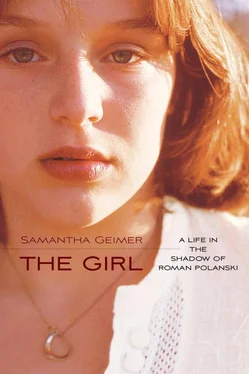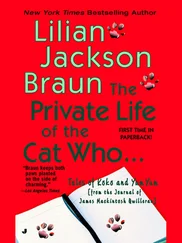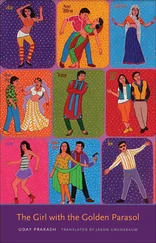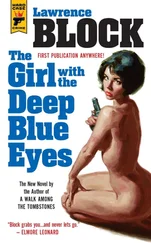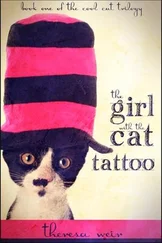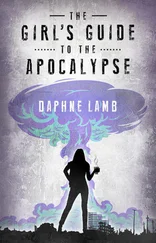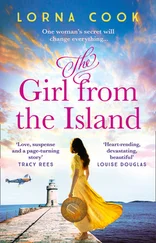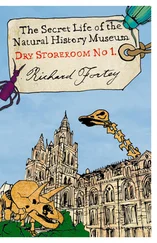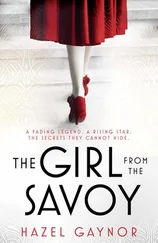The bathrooms of junior high school were filled with cigarette smoke. When we visited the homes of our friends, their parents would offer us a beer. Cocaine was just beginning to become popular, but really, that wasn’t yet the drug for the kicked-back Los Angeles vibe. Like the Eagles were telling us, it was all about taking it easy, not letting the sound of our own voices drive us crazy.
I had been deeply relieved when we relocated to the Valley, a grittier place where actual people with actual jobs lived. The Valley had its celebrities, of course—in the 1940s and ’50s Lucille Ball and Desi Arnaz lived out there, and Clark Gable and Carole Lombard had a love nest—but it was never known for its glamour. It was more like the prototypical sparkling suburb. The Brady Bunch allegedly lived there. And later, the Kardashians. It would be a few years before the Valley Girl would become the iconic American symbol for girls addicted to shopping, long nails, and fame.
Gradually I’d become more interested in acting: When you’re a kid living in Los Angeles, being an actor seems like a perfectly reasonable career goal, shared by half the people you know. My little room was papered with posters of Marilyn Monroe (plan A) and Bette Midler (plan B). At home in York my father’s influence prevailed, and I was going to be a brainiac of some sort, perhaps an attorney. Here in Southern California, none of that mattered much. I was cute. I had the head shots. I was going out on auditions and some callbacks. My mother drove me east on the 101 to an office building in West Hollywood. A casting agent would ask me to give off a look—perky! fresh!—and I’d try to oblige. (Carroll O’Connor from All in the Family noticed me in a hallway one day wearing a short top. He poked me in my middle and teased, “Nice belly button.”)
I wanted to be cheerful about the auditions and the acting classes and all the work that seemed to go into chasing the brass ring. But I was still quite unhappy. I felt entirely unmoored. My parents let me entertain the illusion that I was in control of my life, when in fact I controlled nothing. I was just marking time at Hughes Junior High in Woodland Hills. When I wasn’t gathered with my girlfriends trying to suss out which teachers were drunk or high (“Did you smell his breath?” “Did you see her eyes?”) I’d be daydreaming about change: that Mom would land a big part, or that all the acting and gym and dance classes she drove me to in our big ol’ ugly brown Nissan Maxima would lead somewhere. Did I have what it takes to make it in show business? Probably not. I liked the idea of fame much more than the idea of work.
So I was not a pleasant teen. I mean, I tried, I really did. But the message I conveyed to my family in every look and deed was “Why did you make me come here? I hate this place, and I hate you.” On the other hand—well, the writer J. B. Priestley had a good point: “Like its politicians and its wars, society has the teenagers it deserves.”
One day, Roman Polanski appeared at our door.
Okay, it wasn’t exactly like that. But close. What really happened was this: My sister, Kim, was dating a guy named Henri Sera, a minor film producer who’d visited the house a few times. He knew my mother was in the business, and invited her to a party at Top of the Rocks, a watering hole on Sunset Boulevard. It was an impressive gathering: Diana Ross was there, and Warren Beatty. Mom said hello to Roman, chatted a bit; he made a slightly off-color joke involving sex and tiger balm, and she laughed politely. That was it. A few weeks later, Henri called to say Roman was interviewing young American girls for a photo shoot that he was in the process of doing for Vogue Paris . I was asked if he could come and see me, and I said yes. I never thought about dressing up, and my mom didn’t make me. I was in jeans, sneakers, an unmemorable shirt, and a baseball cap—with my pet cockatiel perched on it. That was his favorite spot.
In a few years, I would get to know a great deal about this brooding, pursed-lip little man. There was, of course, his horrific childhood. He was born Rajmund Roman Thierry Polański, in Paris in 1933 to Polish Jews, and in 1937 his parents made the tragic mistake of moving back to Poland, shortly before World War II began. When Germany invaded Poland in 1939, they were sent to the Krakow ghetto, and his parents were ultimately sent to concentration camps—his mother to Auschwitz, where she was killed, and his father to Mauthausen-Gusen in Austria, where he survived. Roman saw his father captured and marched off to the camp. When he tried to catch up with him, his father, frightened his son would be captured, shouted at him to “shove off.” Polanski managed to escape the ghetto himself at eight through a hole in the fence. Because he didn’t look Jewish, he was sometimes sheltered by Catholic families, sometimes tossed out to wander the countryside. On several occasions he was beaten; he still has a metal plate in his head from his skull being broken. He often had to steal his own food. That was his life until he was twelve, when he was miraculously reunited with his father after the war. His father had remarried, a woman who at first resented Roman, and they lived uneasily together until he was accepted at film school. His relationship with his father never completely recovered.
Really, he had no one.
But then, the extraordinary trajectory of success. He eventually got into acting as a teenager, and made his first movie— Knife in the Water —in Poland in 1962. It was a deeply uncomfortable film about the sexual tension between a bored married couple and a hitchhiker they pick up, and was nominated for Best Foreign Language Film that year. He moved to the United States and went on to direct some of the darkest, most extraordinary movies of our time: Rosemary’s Baby, Repulsion, Macbeth, and, a few years before we met, the movie that was to be nominated for eleven Academy Awards, Chinatown . But even his post-Holocaust life as a celebrated director was marred by the most unspeakable of tragedies: in 1969 his pregnant wife, Sharon Tate—allegedly the first woman he had a real, lasting, fulfilling relationship with—was brutally murdered in their home, along with four others, in one of the infamous Charles Manson killings.
When I met him in February 1977, I knew nothing of this. I had seen Chinatown and didn’t like it. I thought it was both brutal and boring. (Of course, if I had known he’d directed and starred in my favorite movie at the time, The Fearless Vampire Killers, I would have been starry-eyed.) And my mother and Bob, despite being in the business, weren’t exactly film historians. They knew about the Tate murders, so that an air of tragedy hung over him always. They also knew he was powerful and famous and could do things for all of us. In other words, they were pretty much like every other unsophisticated aspiring actor in Hollywood.
• • •
Polanski sat down in the living room and explained what he wanted to do. A French edition of Vogue magazine was looking to do a story on the differences between American girls and French girls—exactly why is a little vague, but it seemed perfectly plausible at the time—and he needed to find the right American girls. He showed my mother and Bob a beautiful spread he’d done with Nastassja Kinski in the Seychelles for a summer issue of Vogue Paris. The theme was “pirates” and it involved the beach, swords, buried treasure, and Kinski as the captured princess in some kind of medieval golden dress. Whether or not he was having a sexual relationship with Kinski then, when she was still fourteen, is a matter open to debate, but he did shortly thereafter. What isn’t debatable is that she was so exquisite in the photos she took your breath away. She also seemed so exotic, so sultry, so knowingly sexual. In a few years Richard Avedon would make the famous image of her wrapped in a boa constrictor, and I always imagine the boa was annoyed at being upstaged.
Читать дальше
